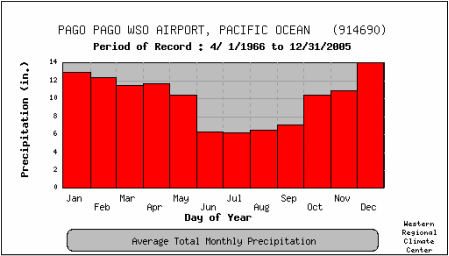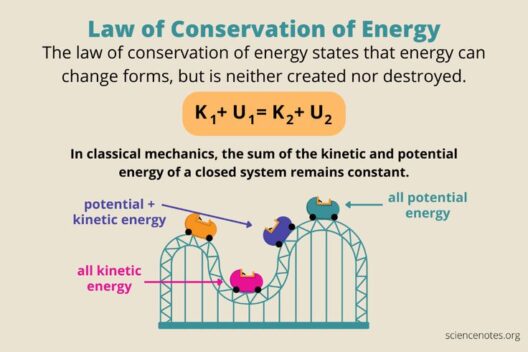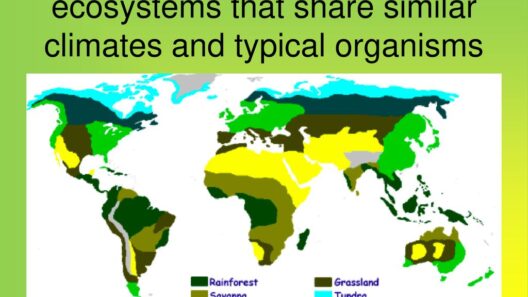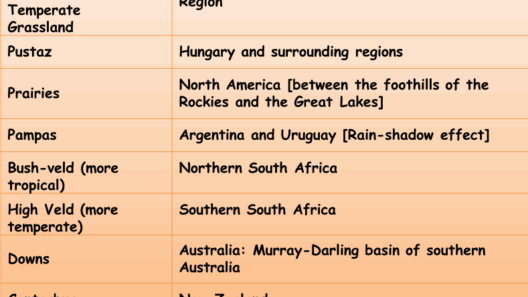The climate in marine biomes is an intricate tapestry woven from the threads of atmospheric conditions, ocean currents, and ecological dynamics. Understanding the climate of these aquatic environments is paramount for comprehending the broader implications of climatic shifts and their impacts on global ecosystems. Marine biomes, often classified into various types based on factors such as depth, light availability, and salinity, exhibit a remarkable variability in their climatic conditions.
Marine biomes encompass several categories, including coastal areas, open oceans, coral reefs, and deep-sea environments. Each of these habitats experiences distinct climatic influences shaped by geographical location, oceanic currents, and the dynamics of the atmosphere. This diversity plays an essential role in the ecological health of marine life and the overall balance of our planet.
Coastal Areas: Coastal regions, such as estuaries and intertidal zones, are characterized by their dynamic environments where land meets sea. The climate in these areas experiences considerable variability due to tidal movements and seasonal changes. During warmer months, higher temperatures and increased sunlight can lead to thriving ecosystems, most notably flourishing populations of phytoplankton and macroalgae. This productivity is subsequently foundational for higher trophic levels, including fish and marine mammals. However, coastal climates are also susceptible to the detrimental effects of rising sea levels and ocean acidification, both exacerbated by climate change.
Open Oceans: The greatest expanses of the Earth’s surface are dominated by open oceans, which feature a relatively stable but nuanced climate. The open ocean’s surface temperature is influenced by solar radiation, and as depth increases, temperatures drop significantly. This thermocline creates distinct layers within the water column, each with unique temperature and salinity profiles. These layers support different organisms and influence nutrient cycling. The subtropical gyres, often characterized by their limited nutrient availability, experience warmer waters and are crucial for understanding global oceanic circulation patterns. Changes in these patterns, driven by climate change, could have far-reaching impacts on global weather systems.
Coral Reefs: Among the most biodiverse marine biomes on the planet, coral reefs depend heavily on specific climatic conditions. These ecosystems thrive in warm, shallow waters where sunlight penetrates effectively, typically within the tropics. The health of coral reefs is intricately linked to sea surface temperatures; even slight increases can trigger mass bleaching events, leading to significant coral mortality. Coral reefs exhibit a narrow temperature tolerance range, and their sensitivity underscores the complexities of climate change. Increased ocean temperatures not only threaten these ecosystems through bleaching but also foster conditions conducive to the spread of coral diseases.
Deep-Sea Environments: In stark contrast to the vibrant life of coastal regions and coral reefs, deep-sea habitats lie in perpetual darkness and experience extreme pressure and cold temperatures. The climate here is stable across geological time scales, but it is nonetheless susceptible to changes brought by human activities. The deep sea is often thought to be insulated from climatic fluctuations, but rising ocean temperatures and acidification due to increased CO2 levels affect even the most remote depths. These changes disrupt the delicate balance of biogeochemical cycles that underpin deep-sea ecosystems.
Climate Change’s Influence: The marine biome climate is inextricably linked to global climate patterns, and the manifestations of climate change are becoming increasingly pronounced. Ocean acidification, resulting from the absorption of anthropogenic CO2, threatens calcifying organisms, including mollusks and corals, which rely on stable pH levels for survival. This shift in ocean chemistry not only affects individual species but also the entire marine food web.
Moreover, increased temperatures lead to altered distribution patterns of marine species. Many fish species rely on specific temperature ranges for breeding and migration, and as these conditions shift, so too do their populations. This has profound implications for commercial fisheries and the livelihoods of those who depend on them.
Another facet of climate change impacting marine biomes is the phenomenon of ocean stratification. Stratification occurs when warmer, less dense water forms a cap over cooler, denser water, limiting nutrient mixing. As a result, the productivity of marine ecosystems may decline, impacting food availability for various marine species.
Mitigation and Conservation Efforts: To address the pressing climate challenges faced by marine biomes, a multifaceted approach is required. Conservation efforts are vital in protecting critical habitats, such as coral reefs and mangroves, which serve as buffers against climate impacts and provide indispensable ecosystem services. Establishing marine protected areas (MPAs) can help sustain biodiversity and bolster the resilience of marine ecosystems against climate change.
Emphasizing sustainable fishing practices, alongside reducing plastic pollution and mitigating the impacts of coastal development, is equally important. These strategies are crucial for preserving marine biodiversity and ecosystems function. Embracing renewable energy sources and reducing carbon footprints can also significantly alleviate climate change pressures on marine environments.
In conclusion, the climate in marine biomes is a complex interplay of various environmental factors and climatic conditions directly influenced by global climate patterns. Understanding these dynamics is vital for advocating for change and implementing effective conservation measures. As we navigate the challenges posed by climate change, the health of marine biomes must remain a priority, for their well-being is intertwined with the health of our planet and humanity as a whole.








